Wildfires devastate California pot farmers, who must rebuild without banks or insurance
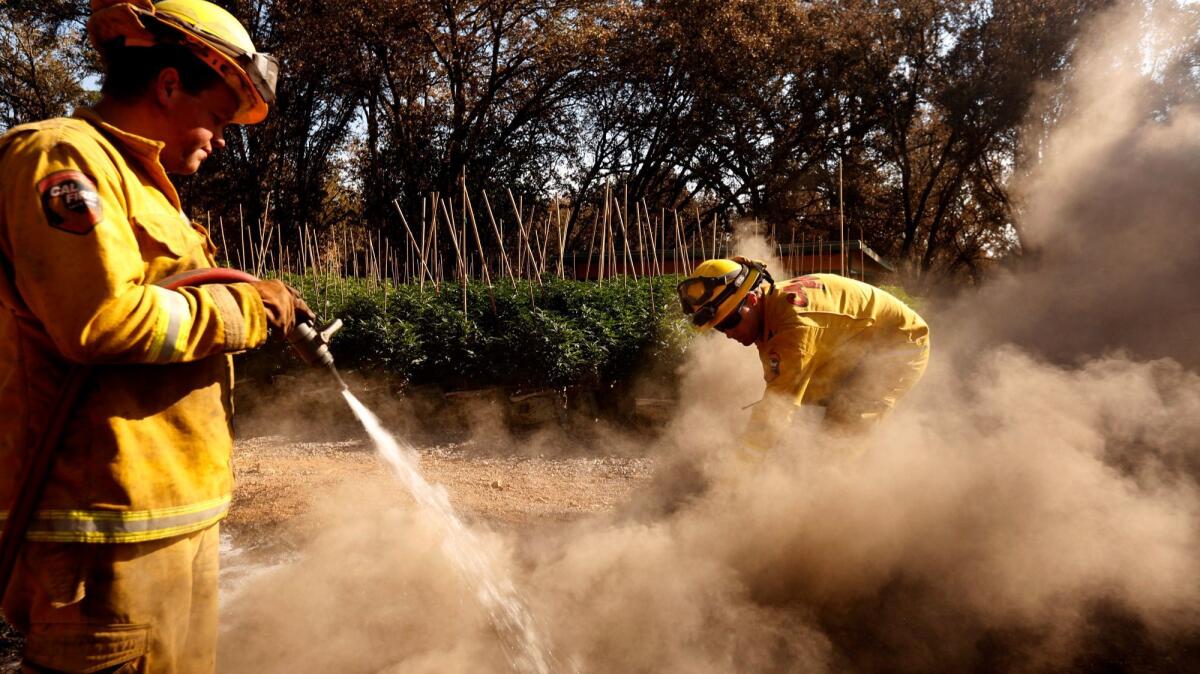
Reporting from Redwood Valley â She knew just where she had buried the gold and silver coins â down a ravine from her home by a big Douglas fir.
After Cheryl Dumont lost her entire marijuana crop, her income for the year, she was anxious to see whether that savings had survived the Redwood fire.
She hiked down to the tree with a shovel and started digging for the plastic box holding the coins. Two feet deep she found what a week before was worth $40,000. It was a melted mess of gold, silver, plastic, dirt and pine needles.
She was among hundreds of growers â big and small, fully permitted, semi-legal and pure outlaw â devastated by the fires in Sonoma, Napa and Mendocino counties.
Their losses illustrate how, despite new laws to make the industry legal in California, many farmers remain uninsured and trapped in a cash economy that leaves them vulnerable to natural disasters.
Fire season and the cannabis harvest coincide in the fall, leaving growers with a combustible mix: flammable plants and the flammable currency that paid for them.
Established crop insurance companies do not write policies for cannabis. Because marijuana growing is illegal under federal law, banks generally do not do business with cultivators.
So even farmers like Dumont, who spent thousands to get her crop permitted by Mendocino County, are stuck with cash. Because that makes them vulnerable to home invasions and robberies, they often bury their cash â or the gold and silver they buy â around their properties.
Many people in Mendocino, and to a lesser extent in Sonoma and Napa, supplement other wages with backyard grows. Gardens are scattered everywhere.
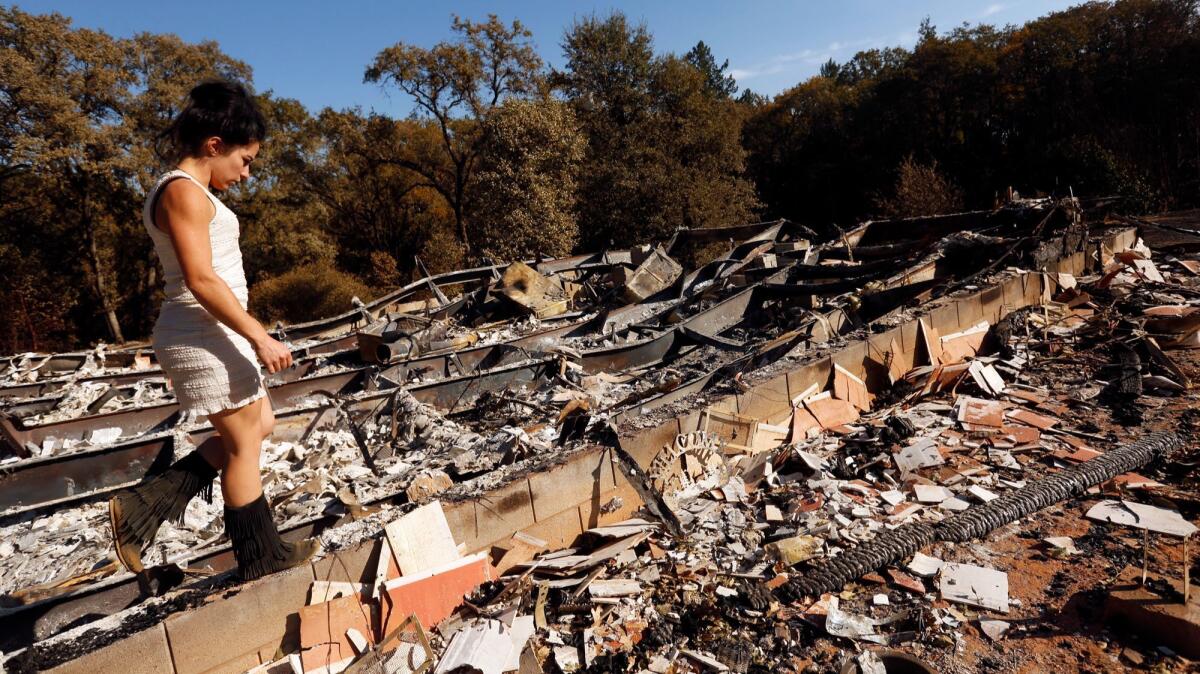
Because the marijuana culture of Northern California has survived in secrecy for the last 50 years, and mostly still does, no one can know the exact loss to the industry.
The threat of losing a yearâs crop and cash reserves pushes many growers to take risks a grape farmer neighbor might not.
When the fires broke, farmers thrashed over four-wheel-drive roads with horse trailers full of hastily cut marijuana. Some defied evacuation orders to save the crops.
Others left, and lost everything.
The owners of Mystic Spring Farms expected its 900 marijuana plants to bring in more than $2 million this season.
The 12-acre farm in the mountains of eastern Sonoma County had its own spring for irrigation, buildings for indoor growing, greenhouses and open fields for outdoor farming. The farmers had investors, distributors, attorneys and business consultants.
But they had no crop insurance. When the Tubbs fire roared through the farm this month, they could only count it as a complete loss.
âEverything is gone,â said Kelvin Craver, 36, a onetime Hollywood producer who co-founded Mystic Springs Farms.
He noted that a few small companies try to sell insurance for marijuana crops. âBut they seemed kind of sketchy. We didnât know if they would really cover the crop in the end,â he said.
Less than 60 miles to the northwest, Ashley Oldham, 31, had already suffered a natural disaster this year at her Redwood Valley farm in Mendocino County.
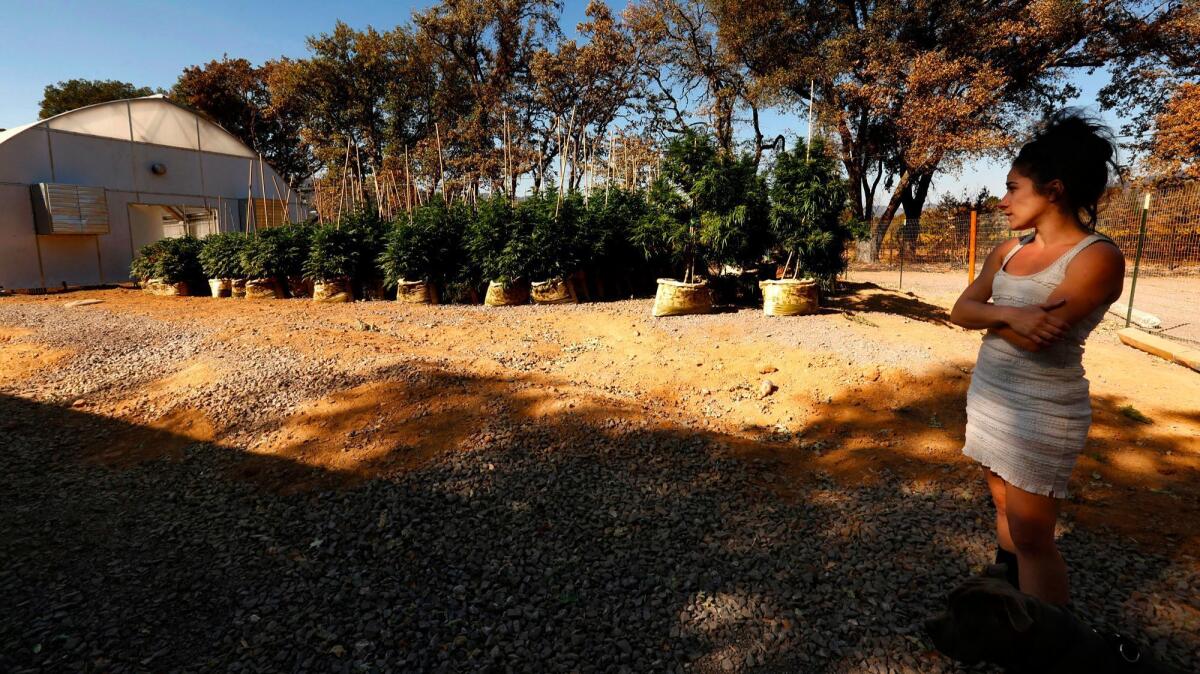
Russet mites infested her plants, so she ripped out the entire crop and replanted in July. She said she had just spent over $200,000 to build an automated, climate-controlled greenhouse that regulated the amount of sunlight her plants received to make them flower when she wanted. She estimated that she spent more than $80,000 to get a county permit, and planned to get a state permit when it becomes available in 2018.
She woke up in the early hours of Oct. 9 to a neighborâs knock on the door and fire in the trees. The power was out. She and her 4-year-old daughter fled the house using the girlâs Batman flashlight.
Her crop, in pots, had been moved outside so building officials could do an electrical inspection of the greenhouse.
She drove off, hoping they would survive.
When she hiked back in the next day, she found her house, two commercial processing buildings, and materials for two new greenhouses destroyed. The fire was so hot that even her homeâs steel I-beam sub-floor warped and melted.
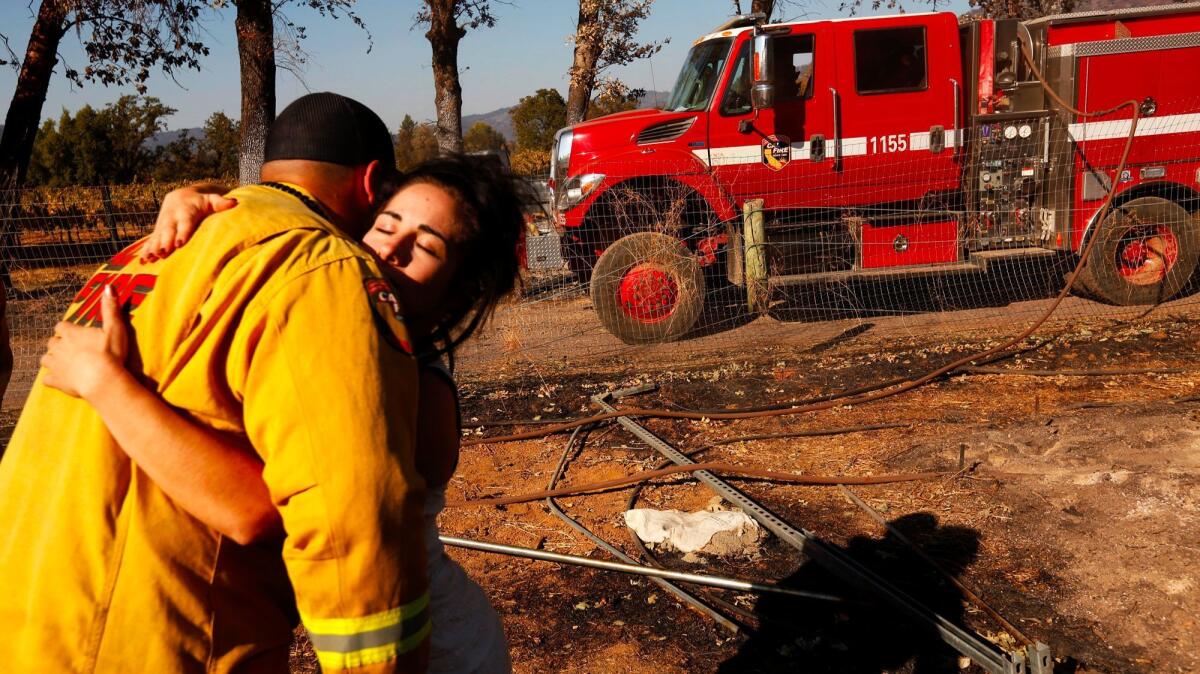
Fortunately, the new greenhouse survived and, amazingly, so did her crop â but for some singeing on the edges. Sheâll have to wait to find out if the smoke made the marijuana too toxic to sell.
What she knows she lost: her savings.
In the past, banks have shut down four of her accounts, she said. So she stored âtens of thousandsâ of dollars in a safe under her house.
The heat turned it to ash.
âThat was going to be how I built the new greenhouses,â she said.
Her next step will be to sell her Audi to buy an RV so she can live on her property and protect her crop from thieves.
Dumont and Oldham are angry that they and other registered marijuana growers were not allowed to reenter the evacuation zone to tend to their crops at the same time as grape growers.
Oldham hiked in anyway, the day after the fire first hit, with 100 feet of hose and a backpack full of high-pressure nozzles and sprinklers to keep her plants from dying in the withering sun and to douse spot fires. Her property was still smoldering two weeks after the flame front passed.
Dumont, 53, couldnât get back to her Redwood Valley land for about a week, so she has no idea whether her crop burned right away, or much later when she could have protected it.
âWeâre still not respected as legitimate business owners,â she said.
It made her wonder whether she might be burying cash and gold for years to come.

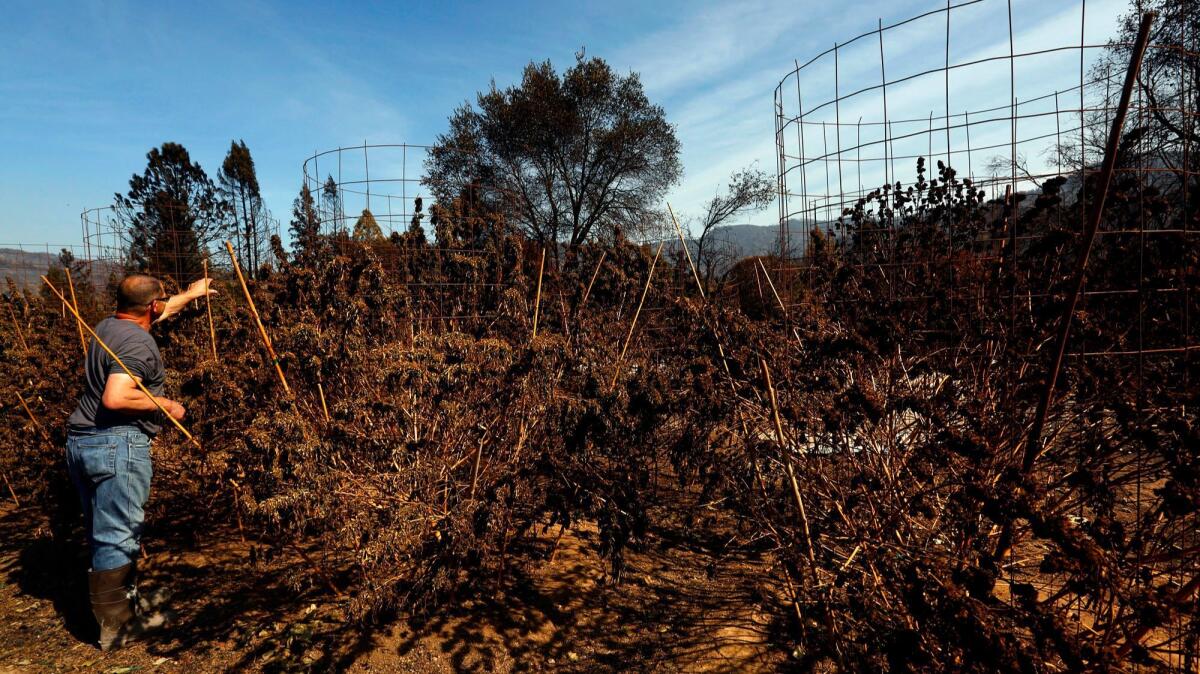
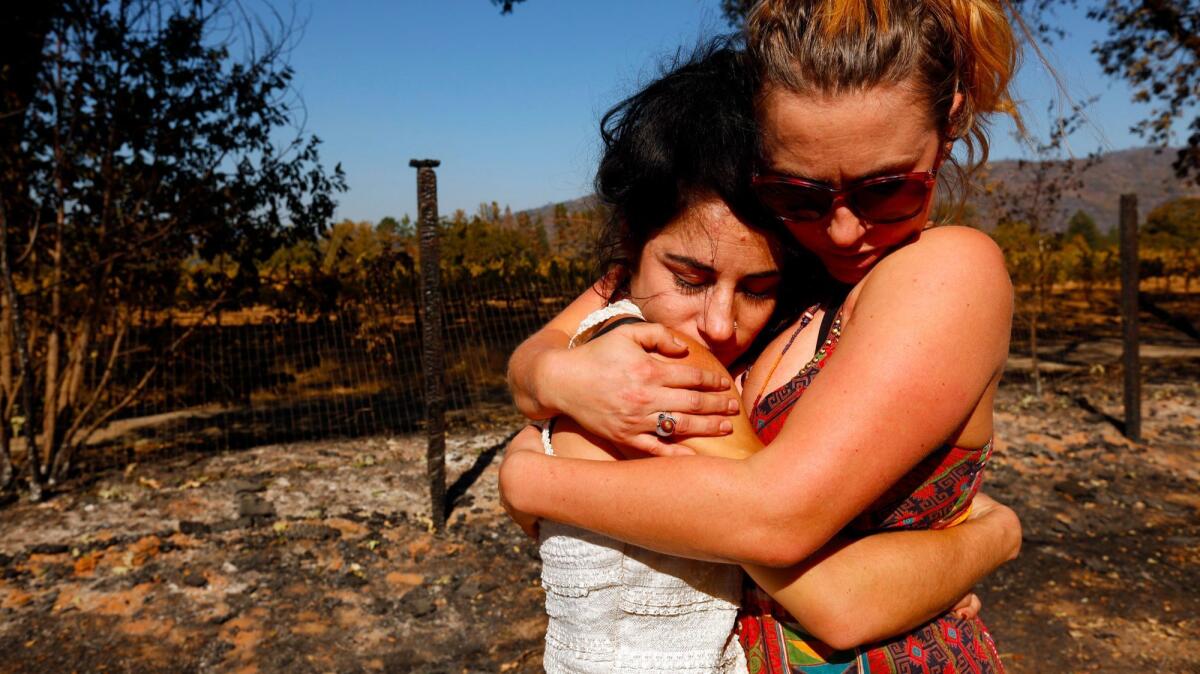
Twitter: @joemozingo
ALSO
The race to escape Redwood Valley: âEveryone out of the car. We have to run!â
A brotherly journey from Alaska to Vegas ends in sorrow
White House press secretary insists women accusing Trump of sexual assault are lying
More to Read
Sign up for Essential California
The most important California stories and recommendations in your inbox every morning.
You may occasionally receive promotional content from the Los Angeles Times.











